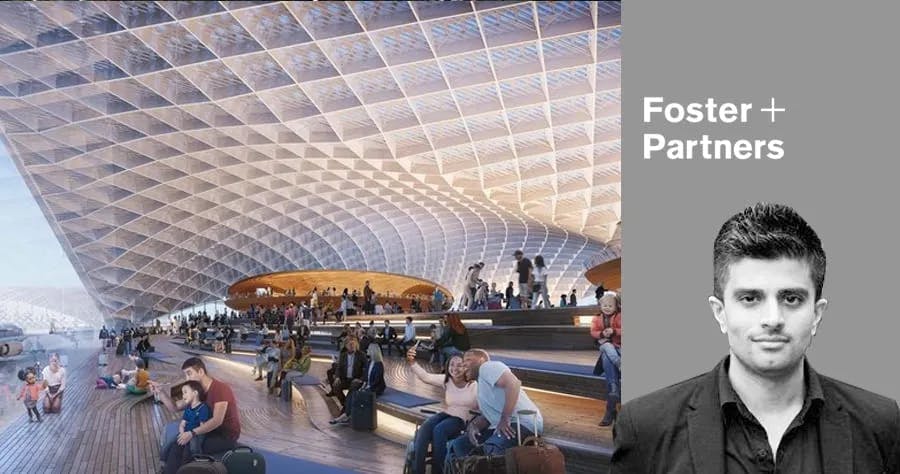
Arpan Bakshi is an Associate at internationally renowned Foster + Partners in London. Trained as an architect, sustainable engineer, computational designer and environmental analyst, Mr. Bakshi has worked at leading firms including Skidmore, Owings & Merrill (SOM) and Rafael Vinoly Architects in New York, and Werner Sobek in Stuttgart. Mr. Bakshi has served as a studio consultant at the Harvard Graduate School of Design, PennDesign and City University of New York. In his spare time he actively shares insights and articles online to an industry forum of over 40 thousand professionals, organizing presentations and trainings from leading experts to a following across 115 countries.
1. Where do you see the state of design practice in 10 years?
Having worked in a number of leading offices, I see my current workplace as a model for the future of design practice.
Architecture today provides a framework for addressing issues of human settlement beyond building design.
An integrated practice is needed for such as task, where architects are sitting alongside not only engineers, but scientists and technologists from disciplines that have never before been a part of the design studio.
2. Choose 1 adjective to define your career so far
Hybrid. Traditional disciplines are expanding, blending and transforming in ways that are continually changing our job descriptions.
3. How are you/your firm altering the state of conventional practice/education?
Architects have historically been tasked with designing a building based on a set brief. We are increasingly tasked with thinking outside the red line and re-writing the brief, positioning the modern Architect as the curator of global megatrends and developing a corresponding design response.
4. What are you doing in your everyday practice/company/job that you wouldn’t have imagined you’d be doing five years ago?
Five years ago I best described myself as an environmental designer.
The definition of ‘sustainability’ has expanded to include emerging technology, material science, mobility, and even, futurology.
5. Any advice for established and/or emerging architects?
Continue learning. Buildings and cities have traditionally been a product of culture. They must now address rapid change. Urbanization, climate, technological progress, globalization and the power shift to emerging markets, are among new forces giving shape to our work.
6. Why did you decide to pursue a non-traditional path in architecture?
At the time I was designing the first LEED Platinum building in my home state. I realized decisions were being made for me by consulting engineers who understood energy and environmental science better than I did. I decided to become a more ‘informed’ designer by going back to school and studying computation, simulation and analysis.
7. In your opinion, how does building performance impacts design?
I still believe how we design buildings affect how they are operated. But that only has a 30-50% impact on resources consumed. Architects have an opportunity to think bigger.
Designing human activity with a master planning mindset can have a net positive impact.
How can we design spaces that are utilized around the clock and around the year? How can we decouple spaces from traditional load profiles, taking them completely off the grid? These are the types of questions we should ask ourselves as designers.
8. If you had the super-power to give a single skill to the entire Architectural community, what would that be?
Empathy. As an industry, designers, developers, operators and tenants included, if we all worked with a shared vision to create spaces that are healthy for people AND for the planet, we would be closer to achieving collective environmental targets.
9. How can building performance be more integrated in the design practice?
Beyond using modeling and analysis in the design process, closing the gap between design and building. Bridging contractual lines between the design and operational teams is where performance is realized.
10. What is the most exciting project that you were a part of in 2018, Why?
I still believe how we design buildings affect how they are operated. But that only has a 30-50% impact on resources consumed. Architects have an opportunity to think bigger.
